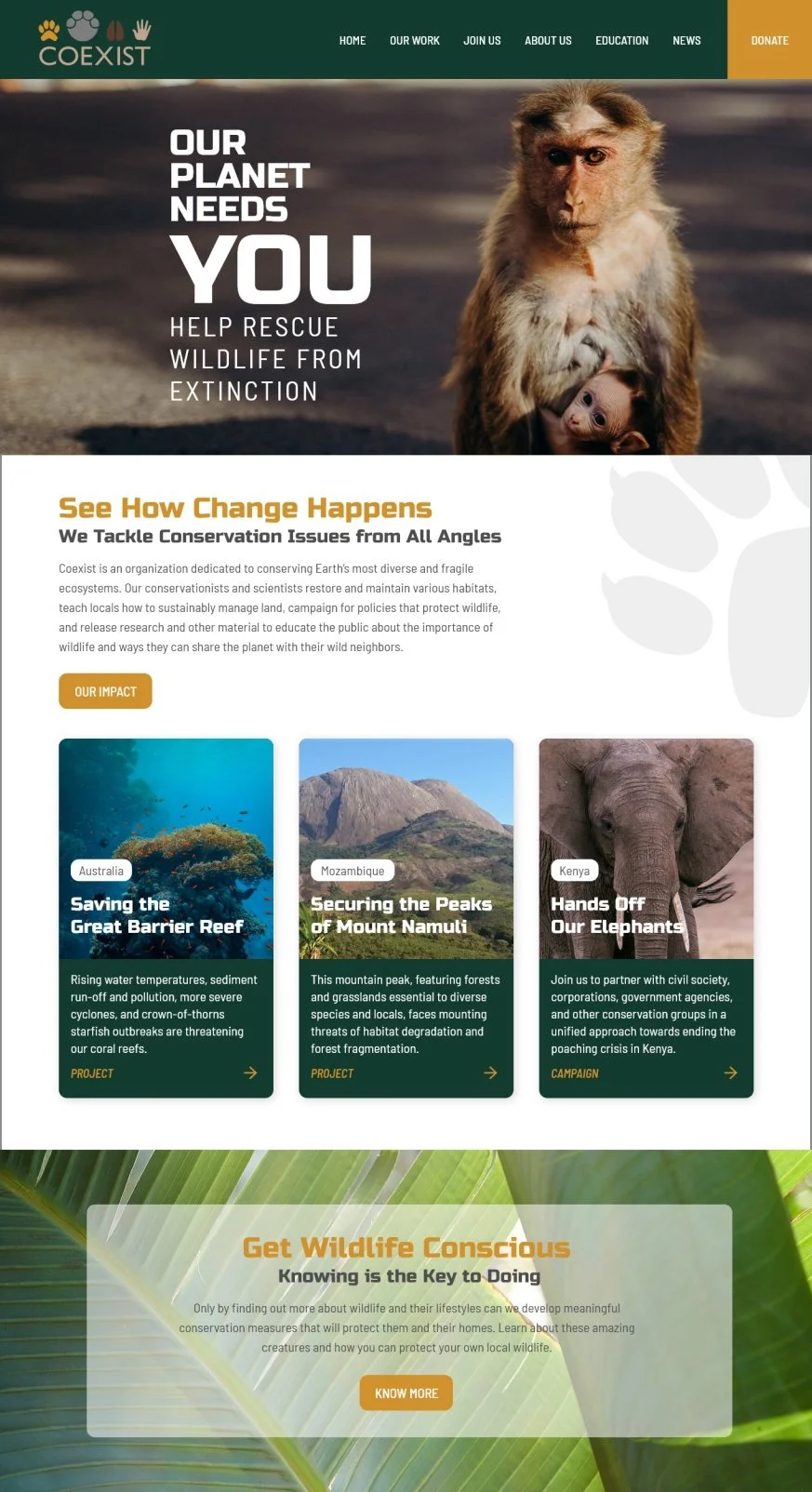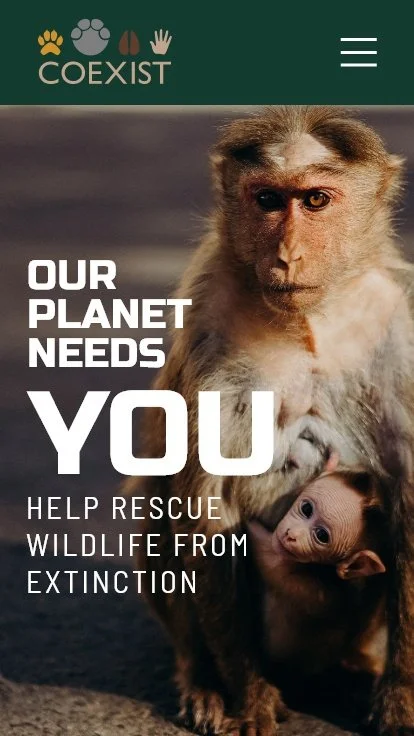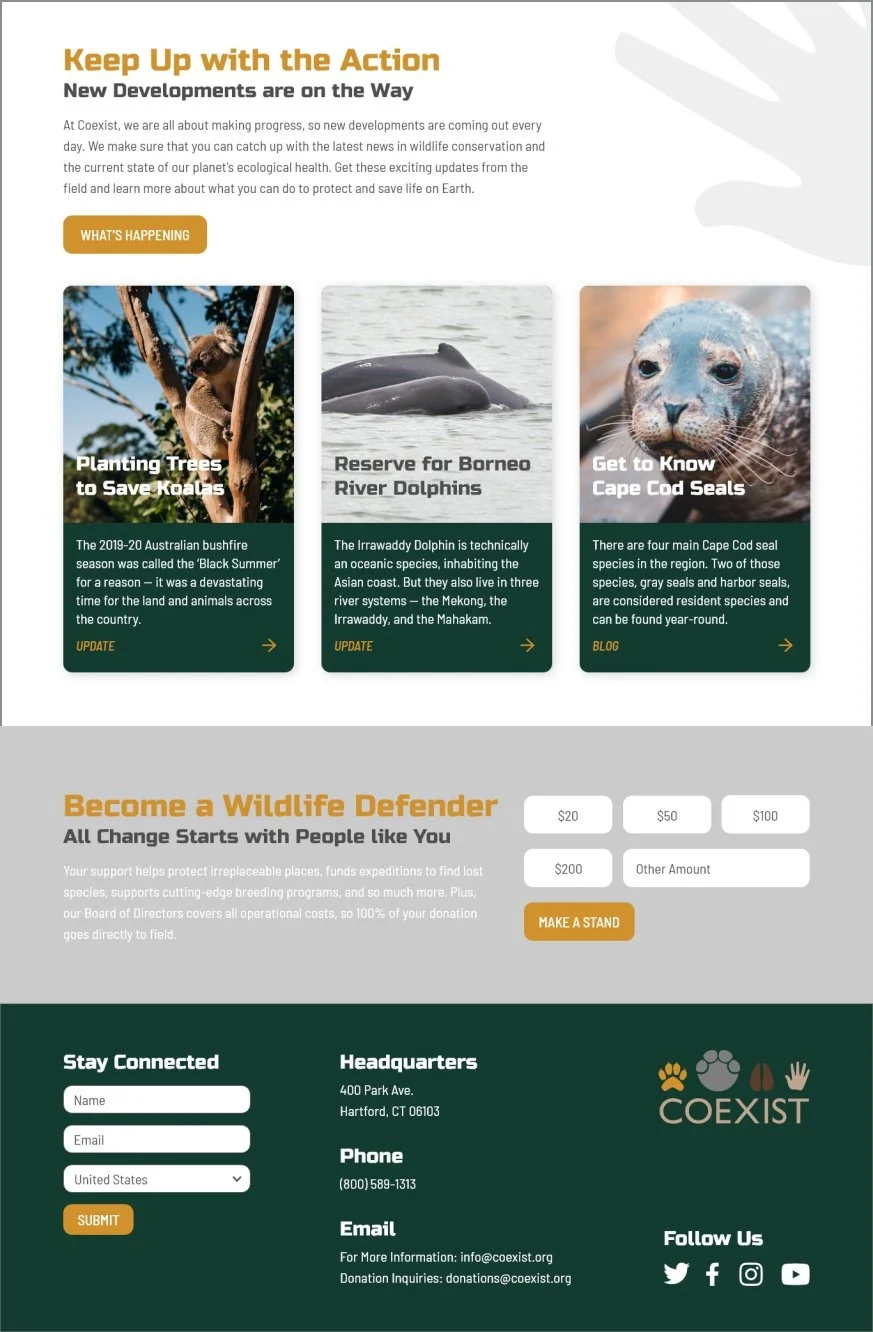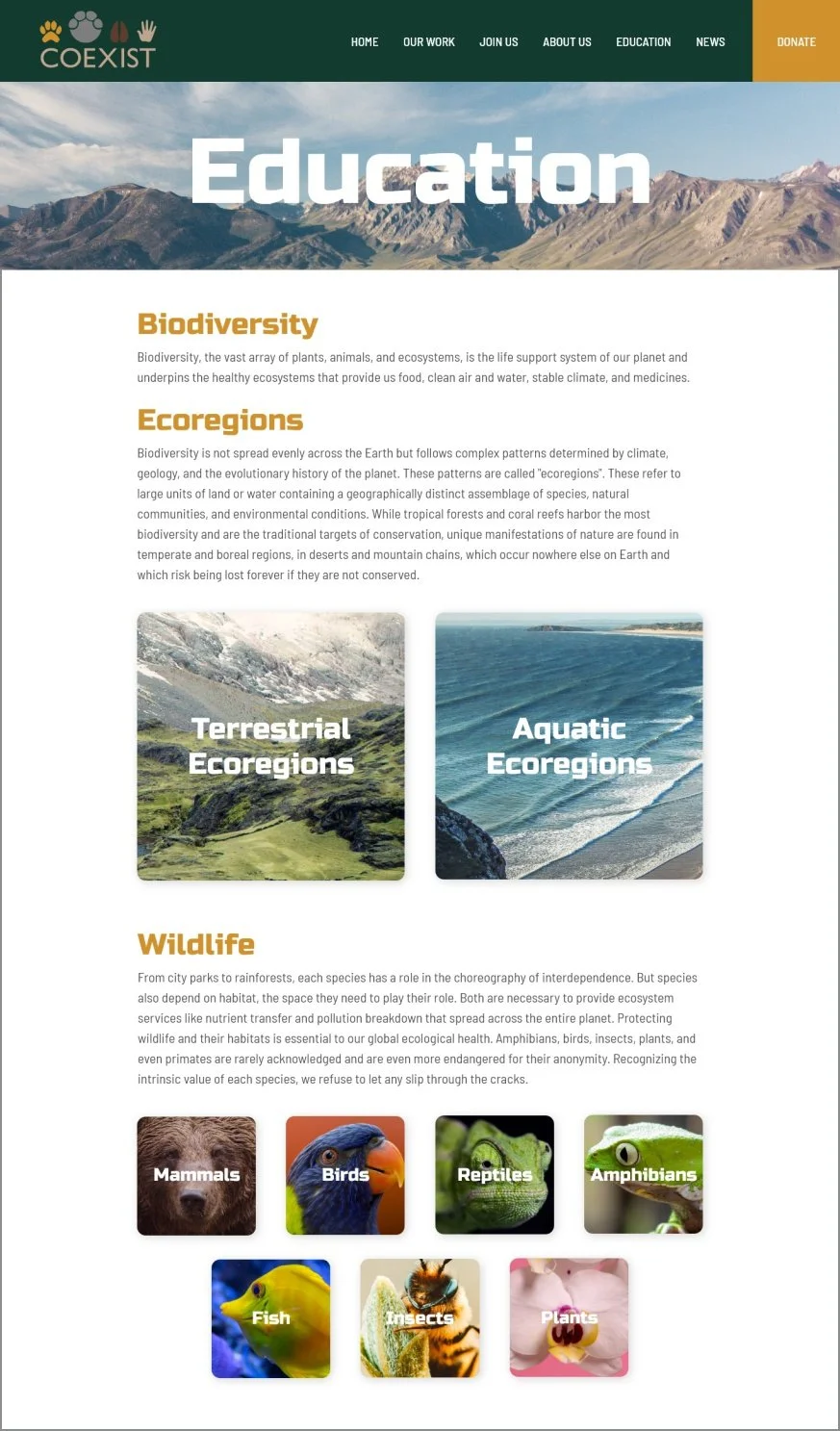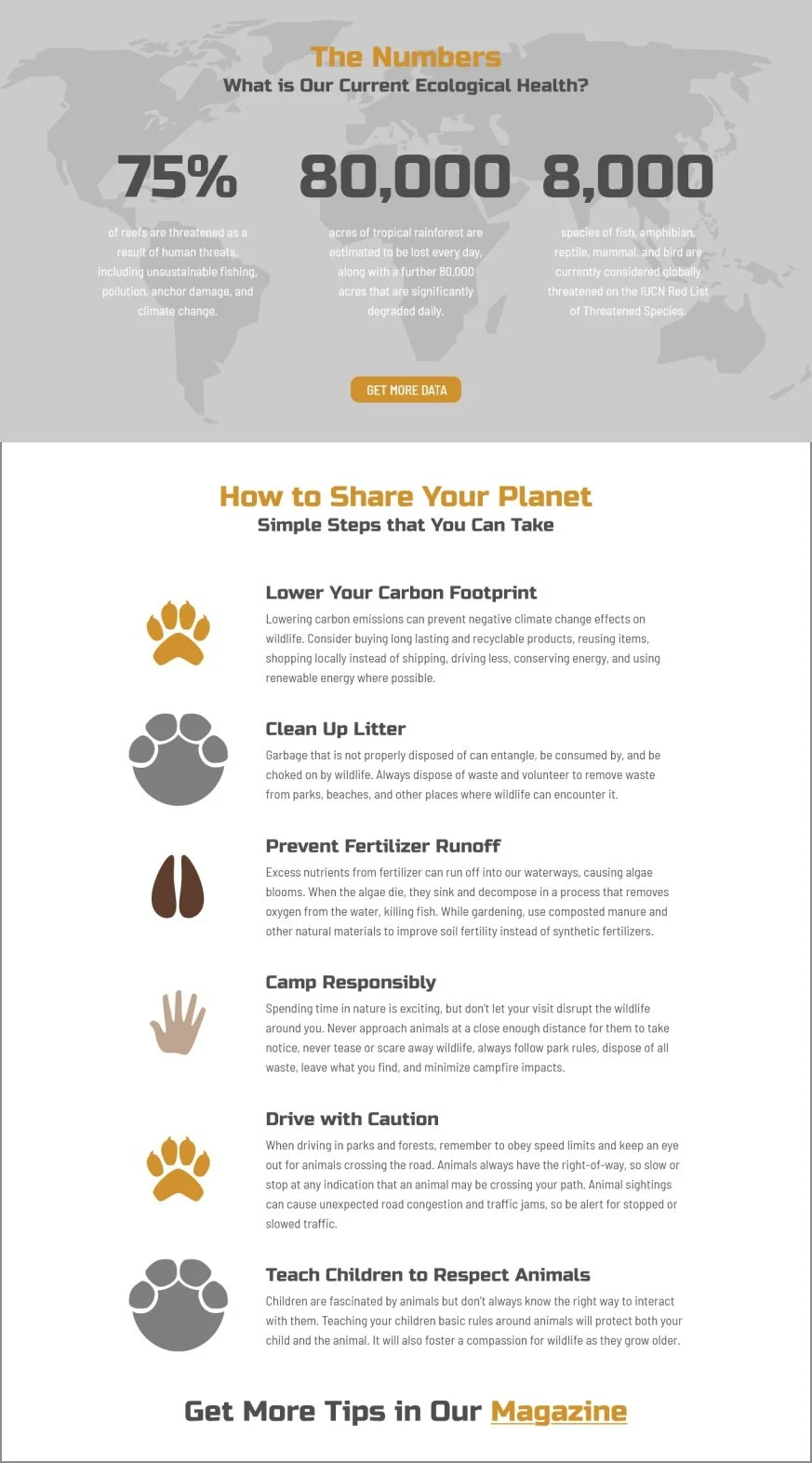Coexist
Brief
LOGO • STATIONERY • UI/UX
Coexist is a wildlife conservation organization committed to protecting Earth’s most diverse and fragile ecosystems. Their team consists of conservationists and scientists whose job is to restore and maintain habitats, teach locals sustainable land management, campaign for wildlife policies, and release educational material to teach the public the importance of wildlife and ways they can share the planet. The goal was to design the brand from the ground up, including the organization name, its message, and values. A new logo, business card, and website were created to best communicate these ideas to an audience of average people, nature-lovers, and governments.

Logo
The organization’s name was “Coexist” to promote healthy coexistence between humans and wildlife. The logo reinforces this concept by grouping together different paw prints – tiger, elephant, giraffe, and human hand – showing that animals share a space with and are just as important as humanity. Each print uses different colors and sizes to signify each creature as an individual.

Stationery
The business card is designed with a simple straightforward layout. The clean front contrasts with the card’s back, which enlarges and overlaps the pawprints into an interplay of organic, natural-looking forms which show the harmonious coexistence of different species.

UI/UX
The website displays the urgency of conservation issues with a simple bold design, using bold headline typography and a high contrast color palette. Plentiful imagery of wildlife and the natural world builds an intimate connection between the viewer and the valuable creatures and ecosystems that Coexist fights to protect. The pawprints are again used as graphics to show species coexistence.
Assets Used
Photos & "Simple World Map SVG" - pexels.com and commons.wikimedia.org
Body Text - barrierreef.org, rainforesttrust.org, wildlifedirect.org, us.whales.org, globalwildlife.org, ifaw.org, worldwildlife.org, fauna-flora.org, reserveamerica.com, integrisok.com, blogs.ei.columbia.edu, scientificamerican.com




